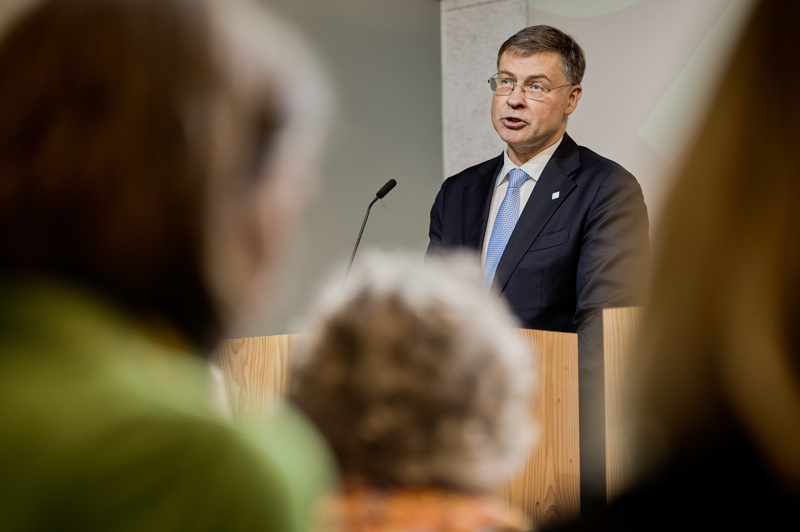Brussels – Despite uncertainties related to conflicts and trade tensions, the European economy has so far not only held up but even exceeded expectations. Economy Commissioner Valdis Dombrovskis admits that “Economic activity grew at a faster pace than expected in the first half of the year, especially in the first quarter,” driven by “investment and exports” that “exceeded expectations for the whole year.” The result: “For the year as a whole, we expect slightly higher growth than the 1.1 percent projected for the EU in the spring.”
At the press conference held after the end of the work of the Copenhagen Informal Eurogroup, Dombrovskis did not provide any figures. The EU’s growth forecast of 1.5 percent had been cut to 1.1 percent, and the combined GDP of the 27 member states could gain 0.1 or 0.2 percentage points compared to the estimates from May. However, as the Economy Commissioner himself acknowledges, “at the same time, the growth momentum is expected to slow down, but not reverse, in the second half of the year.” This explains why he offered no details on the economic trends.
On one thing, the economics commissioner wants to be clear on: numerous headwinds remain for the European economic outlook, including ” slower global trade growth, continued uncertainty and geopolitical turbulence.” All this calls for caution. That is why, Dombrovskis continues, “our growth outlook for the next year has become somewhat weaker than it was when we published our Spring Forecast.” EU GDP at 1.5 percent in 2026 is no longer guaranteed. No need to worry, though. “Overall, the EU’s overall economic foundations remain sound. The labour market, in particular, remains robust. We see wages going up and inflation going down.” Dombrovskis said, “This is good news for households and should continue to support consumption.”
English version by the Translation Service of Withub
